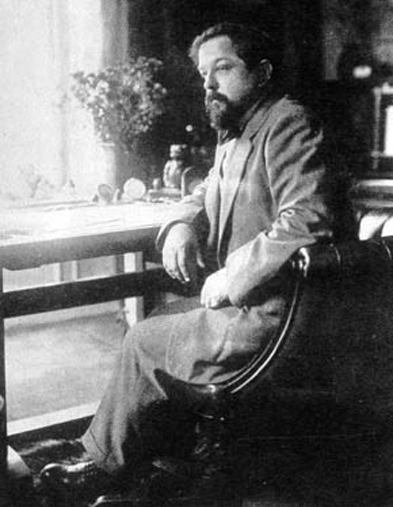CCM serves up a diversity of Debussy delights

In what is by far the most extensive local commemoration of Claude Debussy’s 150th birthday year, Chicago Chamber Musicians are making a major artistic statement by presenting all of the French composer’s chamber music across a handful of October concerts.
Friday night’s program at Gottlieb Concert Hall showcased a variety of works across Debussy’s career from the mid to late-1880s until a couple of years before his 1918 death.
His Petite Suite for four-hand piano, the earliest work on the program, represents an early foray into what was to become a Debussy signature: contemporary transformations of 18th-century forms. The four-movement piece accessibly expands Baroque dance forms while revealing Debussy’s fascination with the whole tone scale and expansive chromaticism, even at this early period.
Meng-Chieh Liu played the lower register and also pedaled throughout, overplaying the opening movement and sometimes obscuring Marta Aznavoorian’s delicate upper voices. The duo managed a better balance during the Cortege, synchronizing their dynamic climax and managing to achieve the same dance-like charm during the Menuet.
The duo also superbly played the two-pianoLindaraja, one of Debussy’s first works to capture Spanish sonorities with his own harmonic vocabulary, an aural attempt to evocatively capture the Alhambra of Granada using morphing music cells as if they were patterns of Islamic tiles.
En Blanc et Noir is Debussy’s 1915 two-piano salute to Stravinsky. Here Debussy weaves folktunes, revelry calls and even the Lutheran chorale A Mighty Fortress is Our God into a modernist collage that at times, sounds aggressive enough to prefigure Prokofiev and Scriabin yet without loses its whimsy.
Debussy’s piano suite Suite Bergamasque is sometimes transcribed for harp and solo instrument, even two harps, although this listener had never encountered a version for solo harp. Berlin Philharmonic harpist Marie-Pierre Langlamet made a compelling case for such a version, showcasing an astonishing range of sonorities and dynamics along with exquisite musicianship and virtuosity that were quite frankly, beyond what even some of the best pianists have managed to muster with this music.
Langlamet was also featured in the Sonata for Flute, Viola and Harp with Chicago Symphony principal flutist Mathieu Dufour and French violist Jean-Claude Velin in a performance that was the highlight of the evening. Not only was the interplay and the musical conception of the artists of the highest order, but the smallest details of the piece were revealed with nuance and delicacy. The little jazzy touches, blue notes, glissandi and tri-tone romp of the finale were delightfully rendered within the fabric of the music rather than as mere effects.
Although the strings were not evenly matched or blended, Danse Sacree et Danse Profane, which closed the program and was heard in a one-player-per-part chamber music version, allowed Langlamet another chance to shine.
Former CSO principal clarinetist Larry Combs performed a rendition of the Premiere Rhapsodie in a clarinet-piano version — with accompanist Liu — that was also an evening highlight. Combs, who alongside his CSO years also regularly performed jazz, brought out the playful and spirited qualities of the piece.
This was preceded by a shorter clarinet work, Petite Piece, that with its single idea of elongated phrases over the bar line formed a fascinating contrast with the more dazzling Rhapsodie.
The program will be repeated 7:30 p.m. Saturday at Northwestern University’s Pick-Staiger Hall. The Chicago Chamber Musicians’ Debussy Chamber Music Festival continues through October 21. chicagochambermusic.org.
Posted in Uncategorized




